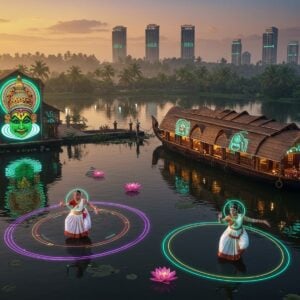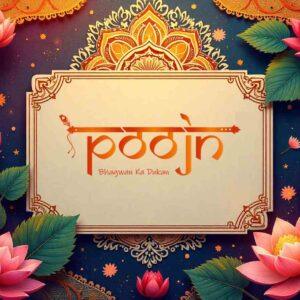
The narrative of Indian ancestry is a captivating blend of ancient history, diverse cultures, and groundbreaking genetic discoveries. From the Indus Valley Civilization’s dawn to the present day, the Indian subcontinent has witnessed the rise and fall of empires, the fusion of traditions, and the continuous evolution of a unique cultural identity. This exploration delves into the origins, migrations, and modern genetic insights that illuminate the rich tapestry of Indian heritage. Discover how traditions endure, seamlessly interwoven with the convenience of acquiring authentic ritual items online at poojn.in.
Origins and Early Civilizations
The Indus Valley Civilization (c. 3300-1300 BCE) laid the groundwork for urban life in India, showcasing remarkable advancements in city planning and architecture. The subsequent Vedic period (c. 1500-500 BCE) saw the arrival of Indo-Aryans, significantly influencing language, religious practices, and social structures. Meanwhile, in southern India, the Dravidian culture flourished, contributing its distinct linguistic and cultural elements to the evolving Indian identity. The rise of powerful empires like the Mauryas (c. 322-185 BCE) and Guptas (c. 320-550 CE) further shaped India’s cultural and political landscape, fostering advancements in art, science, and governance.
At poojn.in, we offer a wide variety of products that connect you with these rich traditions. You can find traditional sindoor containers, perfect for ceremonies and daily use, reflecting the enduring cultural practices of the region.
Migration Patterns and Genetic Admixture
Over millennia, migration patterns have profoundly impacted India’s demographic composition. The Aryan migration theory proposes the influx of Indo-European speakers from Central Asia, while genetic evidence supports the Out of Africa theory, tracing human origins back to the African continent and subsequent migrations across the globe. Trade routes like the Silk Road facilitated cultural exchange and the movement of people and ideas, further enriching the genetic and cultural diversity of the Indian subcontinent. The era of colonialism, particularly under British rule, also played a role in shaping population dynamics and societal structures.
Decoding Indian DNA: Modern Genetic Insights
Recent advancements in genetic research have provided invaluable insights into the complex ancestry of Indian populations. Studies have revealed two major ancestral components: Ancestral North Indians (ANI), genetically related to Central Asians, Middle Easterners, Caucasians, and Europeans; and Ancestral South Indians (ASI), with genetic links primarily within the Indian subcontinent. This admixture, combined with genetic contributions from ancient Iranian farmers, Eurasian steppe herders, and indigenous South Asian hunter-gatherers, has created the remarkable genetic diversity observed in modern Indian populations.
- Ancestral North Indians (ANI): This group shares genetic affinities with populations in Central Asia, the Middle East, Europe, and the Caucasus. This suggests migrations and interactions between these regions over time. The ANI component is a significant part of the genetic makeup of many present-day North Indian populations.
- Ancestral South Indians (ASI): The ASI component represents a distinct genetic lineage largely confined to the Indian subcontinent. This group does not share close genetic ties with populations outside the region. This suggests a long history of independent genetic development within South Asia.
Interestingly, traces of DNA from archaic hominins like Neanderthals and Denisovans have also been found in modern Indian populations, further enriching their genetic heritage.
Cultural and Ethnic Diversity: A Tapestry of Traditions
India’s cultural landscape is a vibrant mosaic of languages, religions, and traditions. The Indo-Aryan and Dravidian language families represent the linguistic diversity, while major religions like Hinduism, Buddhism, Jainism, Sikhism, Islam, and Christianity contribute to the rich spiritual tapestry. Festivals, culinary traditions, and traditional attire further showcase the cultural richness and diversity that characterize India. Moreover, caste and community identities continue to play a significant role in shaping social structures and practices.
Modern Indian Identity: Balancing Tradition and Modernity
Modern Indian identity is a dynamic interplay between tradition and modernity. While embracing technological advancements and global interconnectedness, Indians maintain a strong connection to their cultural heritage. Traditional rituals and ceremonies continue to hold significance in contemporary life, often adapted to modern contexts. The availability of authentic ritual items online, such as those offered by poojn.in, facilitates the preservation and practice of these traditions in the digital age. For example, consider exploring our selection of cotton pooja asans for your prayer rituals. This fusion of heritage and modern convenience strengthens cultural identity, creating a bridge between the past and the future.
Poojn.in is proud to offer a wide range of puja items and cultural goods that connect you to India’s vibrant traditions. Whether you’re looking for Laddu Gopal murtis or traditional incense sticks, we have something to suit every need. Explore our collection today and bring the essence of Indian culture into your home.
Looking Back to Move Forward
The study of Indian ancestry is not merely an academic pursuit but a vital link to understanding the diverse heritage that shapes modern India. By exploring the origins, migrations, and genetic makeup of Indian populations, we gain a deeper appreciation for the rich cultural tapestry that continues to evolve. Poojn.in provides a gateway to connect with this heritage, offering a curated selection of authentic ritual items that enable individuals to participate in and preserve these time-honored traditions. As India navigates the complexities of the 21st century, understanding and celebrating its rich past becomes essential for fostering a sense of unity, pride, and cultural continuity for generations to come.
Hinduism’s Global Reach: A Look at Its Diverse Traditions
Who Wrote the Ramayana? Understand the Authorship and Origins


